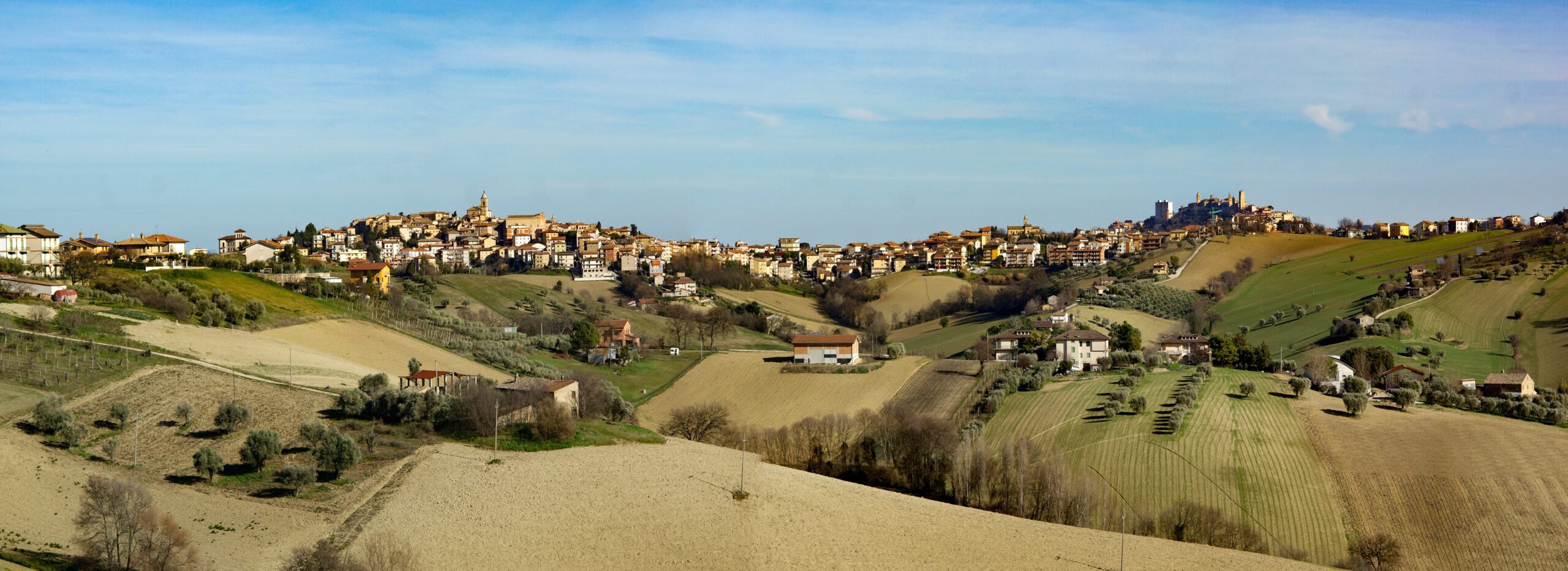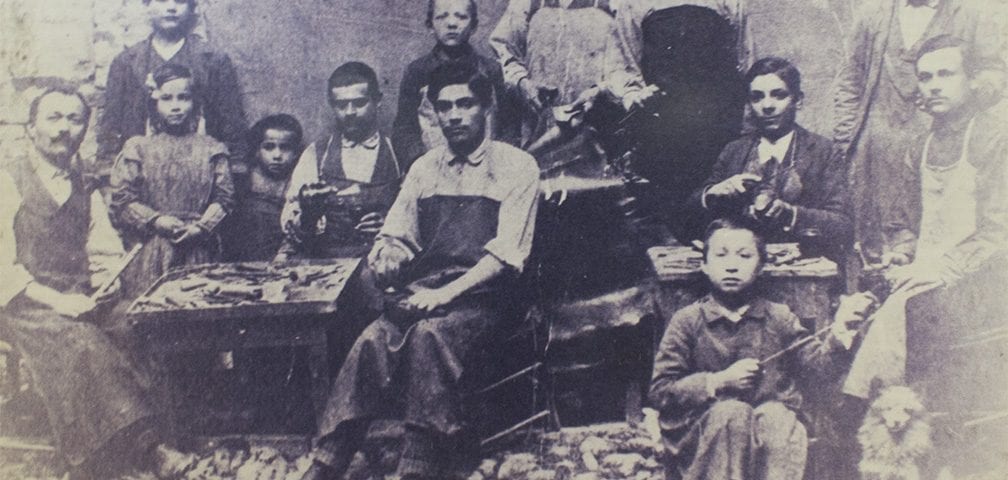Recent studies about our area show that footwear activities started in Middle Age. Some researchers even went back to 1385 with the first Shoe Manufacturer Code Art of Shoemaking Status. Although , it is confirmed by a document that, since 1821, in Monte San Giusto land, there was a prosperous Shoe Maker School.
Through a census in 1901, it is possible to establish that, in Monte San Giusto, the employees in shoe field were about 323 (252 shoe makers, among who, 59 under the age of 15 years and 71 hemmers) over the total number of 821 citizens in the old centre, where were gathered about 40 craft shops. From 1920 to 1930, begins the Era of Technological Innovation, by the introduction of sewing machines which allowed the development of new styles, different from usual “clucks” or “slippers”. For boys were born “polish ankle-boots”, for girls “Ida’s pumps” with high heel, sleepers in wooden or cork heel. The production, step after step, loses roughness, takes form, style and elegance to be admired and sold in all the world, especially after the Second World War up to nowadays.
Leaving aside the contemporary history well known to everybody, characterized by the globalization of production, affecting the peculiarityís loss for many Italian footwear districts, it is interesting to illustrate briefly how the shoe was made in the origins.



